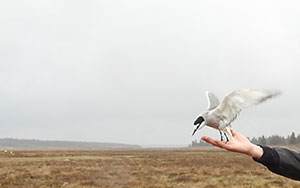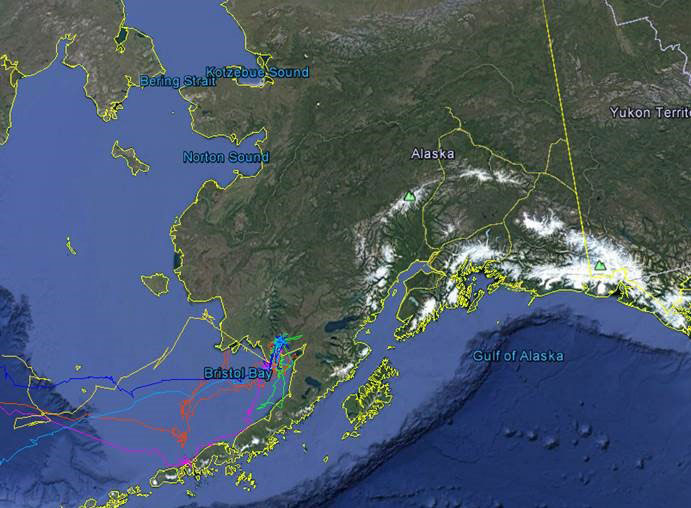Aleutian Tern Conservation Planning Meeting, 26–27 January 2018
Background
 The Aleutian tern (Onychoprion aleuticus, ALTE) is a seabird with a small global population and breeding sites restricted to Alaska and the Russian Far East. Aleutian tern population trends are difficult to assess due to lack of breeding site fidelity, breeding habitat plasticity, gaps in colony counts, variability in colony attendance within and among years, and potential for high rates of inter-colony movement. Additionally, methods for assessing breeding movements, nest monitoring, and colony counts have not been fully developed and implemented in Alaska or elsewhere. Given the unique ecology of the species and the associated data gaps, ALTE is listed as a priority Species of Greatest Conservation Need in the 2015 Alaska Wildlife Action Plan.
The Aleutian tern (Onychoprion aleuticus, ALTE) is a seabird with a small global population and breeding sites restricted to Alaska and the Russian Far East. Aleutian tern population trends are difficult to assess due to lack of breeding site fidelity, breeding habitat plasticity, gaps in colony counts, variability in colony attendance within and among years, and potential for high rates of inter-colony movement. Additionally, methods for assessing breeding movements, nest monitoring, and colony counts have not been fully developed and implemented in Alaska or elsewhere. Given the unique ecology of the species and the associated data gaps, ALTE is listed as a priority Species of Greatest Conservation Need in the 2015 Alaska Wildlife Action Plan.
In 2016, an ALTE Technical Committee (ATTC) was formally established under the auspices of the Pacific Seabird Group to better coordinate and communicate ALTE research and conservation efforts. ATTC members include representatives from federal and state agencies, universities, and NGOs. ADF&G and collaborators submitted a proposal for funding from the National Fish and Wildlife Foundation Pacific Seabird Program in 2017 requesting funds to begin filling in information gaps for Aleutian terns, including the development of consensus methods for colony monitoring.
As such, we convened a conservation planning meeting in early 2018 to assess the utility of current and/or potential field methods to assess important breeding season parameters related to ALTE population status and/or trends. Meeting attendees included current ALTE researchers and technical committee members, invited researchers with experience studying similar species and/or biostatistics, a statistical consultant familiar designing monitoring frameworks for hard-to-study species, and a facilitator to guide the discussion.
Below you will find links to the Meeting Framework, Agenda, and Final Report from the meeting. We hope to reconvene the meeting in 2019 to continue refinement of methods for documenting colony status and trends for Aleutian terns.
- Meeting Framework (PDF 178 kB)
- Agenda (PDF 127 kB)
- Final Report (PDF 398 kB)
- Aleutian Tern 2018 Field Season Report: Comparison of Methods for Determining Colony Abundance (PDF 8,980 kB)

